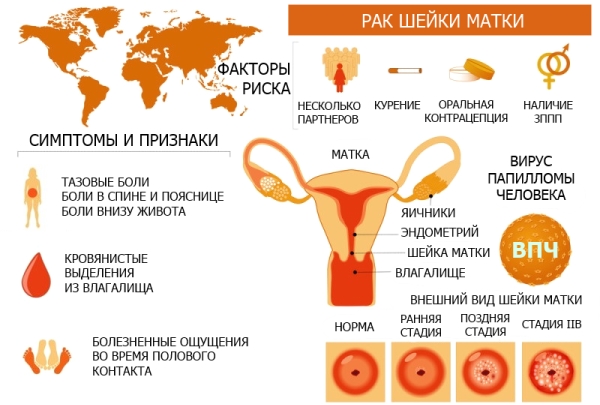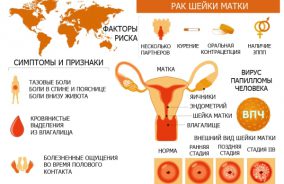What is HPV 16? It has been scientifically proven that the human papillomavirus is one of the most common pathogens in modern women and men in the world. Currently, there are many types of HPV. Depending on its type, the virus can provoke various pathologies of the skin and mucous membranes, the appearance of neoplasms in the form of condylomas, warts and papillomas.
HPV type 16-18 is considered the most serious, as it most often leads to the development of cancer. All types of papillomaviruses are conventionally divided into three groups. The first includes strains that do not lead to the development of malignant neoplasms, for example, plantar warts. The second type includes papillomas that are localized on the genitals. Such neoplasms are low-oncogenic. The most dangerous types are those that cause cancer, in particular viruses types 16 and 18. They should be given special attention.
This virus is considered oncogenic and often leads to the growth of cancerous tumors. In men, this disease is rare and can manifest itself in the form of laryngeal papillomatosis and neoplasms on the genitals.
A high probability of developing a malignant tumor occurs in women during the cessation of menstruation and in older men. Approximately 50% of cervical cancer cases occur after age 50.
This disease poses a great danger to women. When diagnosing HPV type 16, you should not panic: you can live a full life with this pathology if you prevent its development in the body.
The virus affects not only women, but also men. Timely treatment, including antiviral drugs, a healthy lifestyle and preventive measures, will help reduce the likelihood of developing genital cancer.

stages
Papillomavirus has 4 stages.
- Latent is characterized by a hidden course of the disease and does not cause cell damage. The virus can be detected using a PCR test. It is possible to suppress development by taking appropriate medications.
- At the second stage, active reproduction and cell division occurs. At this stage, growths may appear, which are detected by cytological and histological examination of tissues.
- The next stage is characterized by improper tissue development and deformation of the cellular structure.
- Malignant transformation of cells occurs at the fourth stage. The virus can provoke various mutations and cancer.
Symptoms
Papillomavirus can be found in almost any person. Currently, the disease affects every third person on the planet. The virus is dangerous for people with weakened immune systems. With strong immunity, papillomas may not manifest themselves for a long time.
Signs of HPV in men and women can be detected in the presence of serious illnesses leading to a general weakening of the body.
The main and often the only symptom is the formation of growths on the surface of the skin.
Manifestations occur in only 5% of infected people; in the remaining people, the pathology is asymptomatic.

Due to a weak immune system, the DNA of the infection begins to actively multiply, cell division occurs, resulting in the formation of warts, papillomas and condylomas on the human skin.
Warts
They can occur on the palms, hands, elbows and soles of the feet. The growths, up to 10 mm in diameter, have a round shape, clear boundaries, a rough surface, and their color ranges from light brown to black.
warts
They occur in the groin area and also tend to spread quickly. One of the signs of the presence of pathology in the body is bleeding from the vagina in women, which occurs during sexual intercourse, or for no particular reason.
Genital warts in men are located on the genitals, scrotum, in the perineal area, near the anus, and are rarely found on the tongue.
Condylomas have a sharp end and stalk, rough to the touch, and look like a bunch of grapes. If treatment is not applied promptly and medications are not taken, neoplasms can become oncogenic and cause testicular cancer, rectal cancer, prostate tumors in men and other pathologies.
Papillomas
Such formations are usually the same color as the skin or slightly darker. Neoplasms are long growths with a stalk, most often located in fat folds, armpits, under the mammary glands, in the cervico-facial area, and in men - in the genital area.
Papillomas can rapidly develop and invade other places on the skin. Such growths not only cause physical discomfort in women and men, but also pose a danger as they can spread throughout the body.

Routes of transmission of HPV
There are several routes of infection.
- Most often, papillomavirus is transmitted from an infected person through sexual contact during unprotected intercourse. Oral contact reduces the likelihood of strains being introduced, but the possibility of transmission still exists.
- Contact-household way. The infection enters the human body through microcracks, wounds, and scratches.
- From mother to child during the birth process. The baby can become infected when moving through the birth canal. Signs of damage are the presence of neoplasms in the child’s mouth and genitals.
- Self-infection with HPV is a fairly rare phenomenon and occurs when removing body hair, epilation or shaving.
The greatest likelihood of contracting the virus occurs in females, as well as in men who begin sexual activity early and often change partners. The risk of pathology occurs in people with a weak immune system, various chronic diseases, for example, diabetes, HIV infection, as well as in women who have had an abortion.
Features of pathology in women
HPV most often affects women aged 15 to 30 years who are sexually active. Most often, the process is asymptomatic and does not cause any complaints in patients. The virus can appear much later, when women reach menopause.
Starting from the age of 30, every woman needs to be regularly tested for papillomavirus, especially types 16 and 18, since these strains provoke malignant neoplasms on the genitals and pathological growths on the cervix.
Type 16 is the most dangerous. By penetrating the uterine tissue, strains can cause changes in the cell nucleus, affect the surface of the epithelium, and provoke cancer of the internal genital organs.

Diagnosing the pathology is not easy: first, the virus invades the lower layers of the epithelium, and rarely makes itself felt by any manifestations. When the infection spreads to the vessels and nerves, severe symptoms may occur. Often at this stage, an HPV test detects cervical cancer.
Diagnostics
A successful outcome depends on timely diagnosis and a properly selected course of treatment. What tests need to be taken?
- To detect the disease, PCR analysis is used. Polymerase chain reaction is a research method that is performed by taking a smear from the cervical mucosa. This analysis can not only detect HPV types 18 and 16, but also determine the number of pathological cells.
- Another method is DNA analysis. The study involves taking scrapings from the mucous membranes of the genital organs.
- The specialist may prescribe additional diagnostics: a cytological smear, colposcopy or cervical biopsy.
A positive test for types 16 and 18 is not a death sentence, and does not always mean the development of malignant neoplasms, although the strains will remain in the body forever.
The specialist will prescribe adequate treatment that will get rid of the external signs of the disease, as well as drugs that stop the development of pathological processes in the cells.
To return to a full life, it is necessary to give up negative habits that contribute to the development of cancerous growths and strengthen the immune system. By taking a timely test for the presence of the disease, and detecting a tumor at an early stage, as well as applying appropriate treatment, you can avoid oncological consequences and cure the disease, leaving it in remission.
Patients should regularly, at least once a year, visit diagnostic centers and periodically get tested for HPV.

Treatment tactics
How to cure the pathology, what drugs should be used? When papillomavirus is detected, the following treatment methods are used.
Local treatment
It is carried out when warts, condylomas and papillomas are localized on the body. For this purpose, chemical cauterization, laser removal, surgical removal methods, as well as various drugs are used.
General therapy
It is aimed at increasing immunity. For this purpose, vitamin and mineral complexes and antiviral drugs are prescribed to help the body cope with the infection. Treatment of papillomavirus involves the use of drugs aimed at eliminating and preventing the disease. The drugs used in therapy are Cervarix, Gardasil, which contain protein compounds that help suppress cancer cells. However, it is currently impossible to get rid of the pathology forever; drugs against cancerous growths are under development.
Treatment also includes restoring the vaginal microflora and taking interferon, which prevents pathology from multiplying inside the cells.
Other measures
The patient needs to get rid of alcohol abuse and smoking, which are considered potentially dangerous for the development of malignant neoplasms. General strengthening drugs, special hardening measures, moderate physical activity, and a healthy diet are used.
If a woman consults a doctor at the stage of tumor appearance, radiation, chemotherapy and surgical treatment are used. During the entire course, it is necessary to use barrier methods of contraception and undergo regular examinations.
Prevention
To avoid the penetration of papilloma, you must follow some recommendations:
- avoid casual sexual contacts and rarely change sexual partners;
- practice protected sexual intercourse;
- avoid unwanted pregnancies and abortions;
- regularly visit a gynecologist and urologist, get tested for infection;
- treat inflammatory processes in the genital organs;
- avoid bad habits;
- lead a healthy lifestyle;
- Don’t forget about supporting your immune system with medications.
It is completely impossible to cure pathology in humans. However, with strong immunity, the virus may remain inactive. Therefore, patients need to lead as healthy a lifestyle as possible and undergo regular tests.
Please leave a comment:






Please leave a comment.
